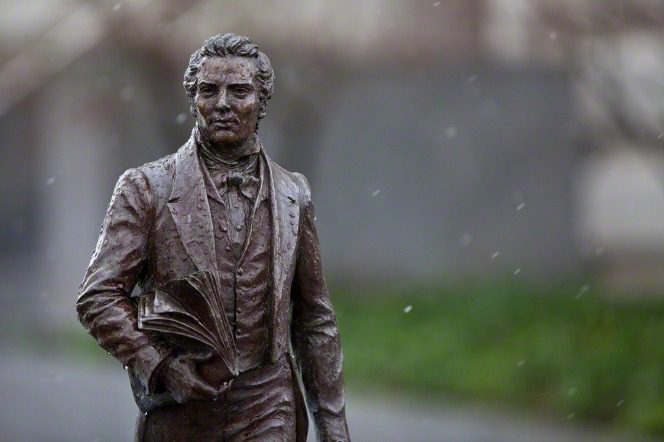
Discovery of Joseph Smith’s involvement in plural marriage has tried the faith of more than a few believers in his prophetic claims. In a number of cases, it has led people altogether out of the Church of Jesus Christ of Latter-day Saints.
Lamentable though that is, it’s scarcely surprising. Early Mormon polygamy is a murky matter, and, candidly, it’s almost certainly the most difficult issue in Mormon history.
I don’t see any good way to turn the beginnings of Mormon plural marriage, as such, into a positive draw for the faith, and I won’t pretend to do so. Moreover, it’s ridiculously easy to turn the topic into a negative — especially in our leeringly cynical and sex-obsessed culture. We’re all too aware of politicians, preachers, and other public figures, including vocal proponents of “traditional morality,” who have eventually been revealed as having feet of clay.
That said, I also don’t believe that Joseph Smith’s involvement in early Mormon plural marriage, properly understood, is lethal to his personal credibility or to his claims as a prophet.
Here are some items on this topic that I’ve found valuable:
Gregory L. Smith, “George D. Smith’s Nauvoo Polygamy,” FARMS Review 20/2 (2008): 37-123.
Brian C. Hales, “Fanny Alger and Joseph Smith’s Pre-Nauvoo Reputation,” Journal of Mormon History 35/4 (2009): 112-190. This entire issue of the Journal of Mormon History can be downloaded here.
Brian Hales, a faithful and active member of the Church of Jesus Christ of Latter-day Saints — he was even, until relatively recently, a member of the Mormon Tabernacle Choir — maintains an entire website that’s devoted to the topic of “Joseph Smith’s Polygamy.”
Newell G. Bringhurst and Craig L. Foster, eds., The Persistence of Polygamy: Joseph Smith and the Origins of Mormon Polygamy (Independence, MO: John Whitmer Books, 2010) — particularly, Don Bradley, “Mormon Polygamy before Nauvoo? The Relationship of Joseph Smith and Fanny Alger” (14-58); Brian C. Hales, “Joseph Smith and the Puzzlement of ‘Polyandry'” (99-151); Craig L. Foster, David Keller, and Gregory L. Smith, “The Age of Joseph Smith’s Plural Wives in Social and Demographic Context” (152-183); and Ugo A. Perego, “Joseph Smith, the Question of Polygamous Offspring, and DNA Analysis” (233-256).
My friend Ugo Perego, an Italian geneticist and a member of the Church of Jesus Christ of Latter-day Saints, maintains a website dedicated, in part, to the subject of Joseph Smith, plural marriage, and DNA.
One of the conclusions to be drawn from Dr. Perego’s work, to this point, seems to me — and I know that he agrees with me — to be this: The genetic evidence plainly appears to call into question the anti-Mormon portrayal of early LDS polygamy as a kind of sexual romp for Joseph, a wild orgy. If he was as sexually driven as the critics want to portray him, one would reasonably expect quite a few children to have resulted, from multiple women. Yet, thus far, there are none, except from Emma (his first wife). I personally won’t actually be bothered if it ultimately turns out that he has descendants from plural wives, but the results so far seem to suggest that sex wasn’t the driving force behind Joseph’s plural marriages. (Richard Bushman, one of Joseph’s most recent and most distinguished biographers, tentatively proposes that Joseph was driven not by lust but, to a very large degree, by a quest for kin-relationships, and there is considerable historical evidence to support that view.)
I’m aware of further work on its way from Don Bradley, Brian Hales, Ugo Perego, Craig Foster, and etc., and will probably highlight it here (and perhaps elsewhere) when it’s available.
Taken as a whole, in my judgment, Joseph Smith still emerges from the historical record as a good, sincere, and honest man. I know that his involvement in early plural marriage can be made to look like a powerful counterargument against that judgment. I believe, however, that the best response to that counterargument is a better understanding of the relevant history.
History is no enemy to the faith of the Latter-day Saints — though bad history, poorly understood history, polemically abused history, and glib pseudohistory very obviously can be.











